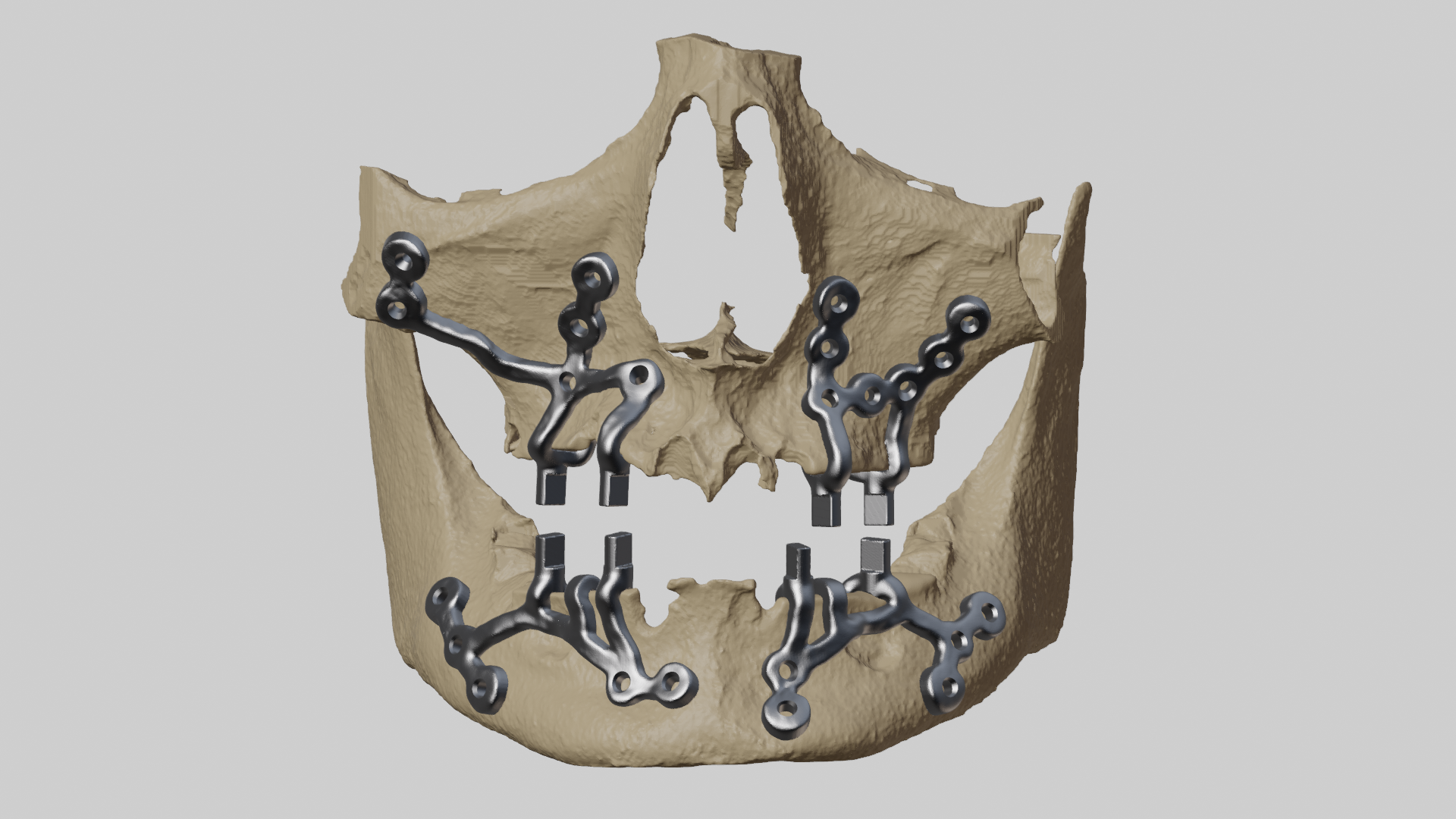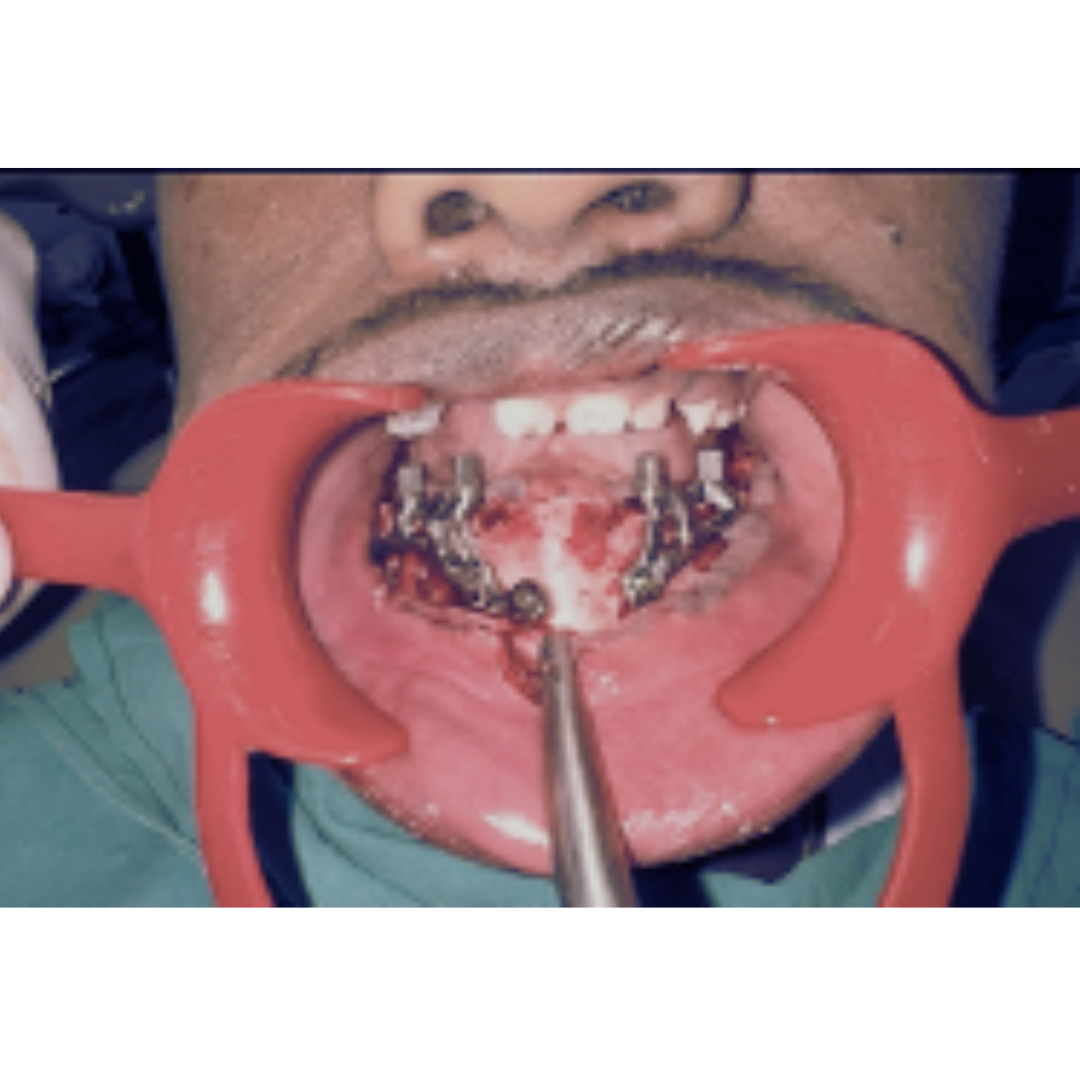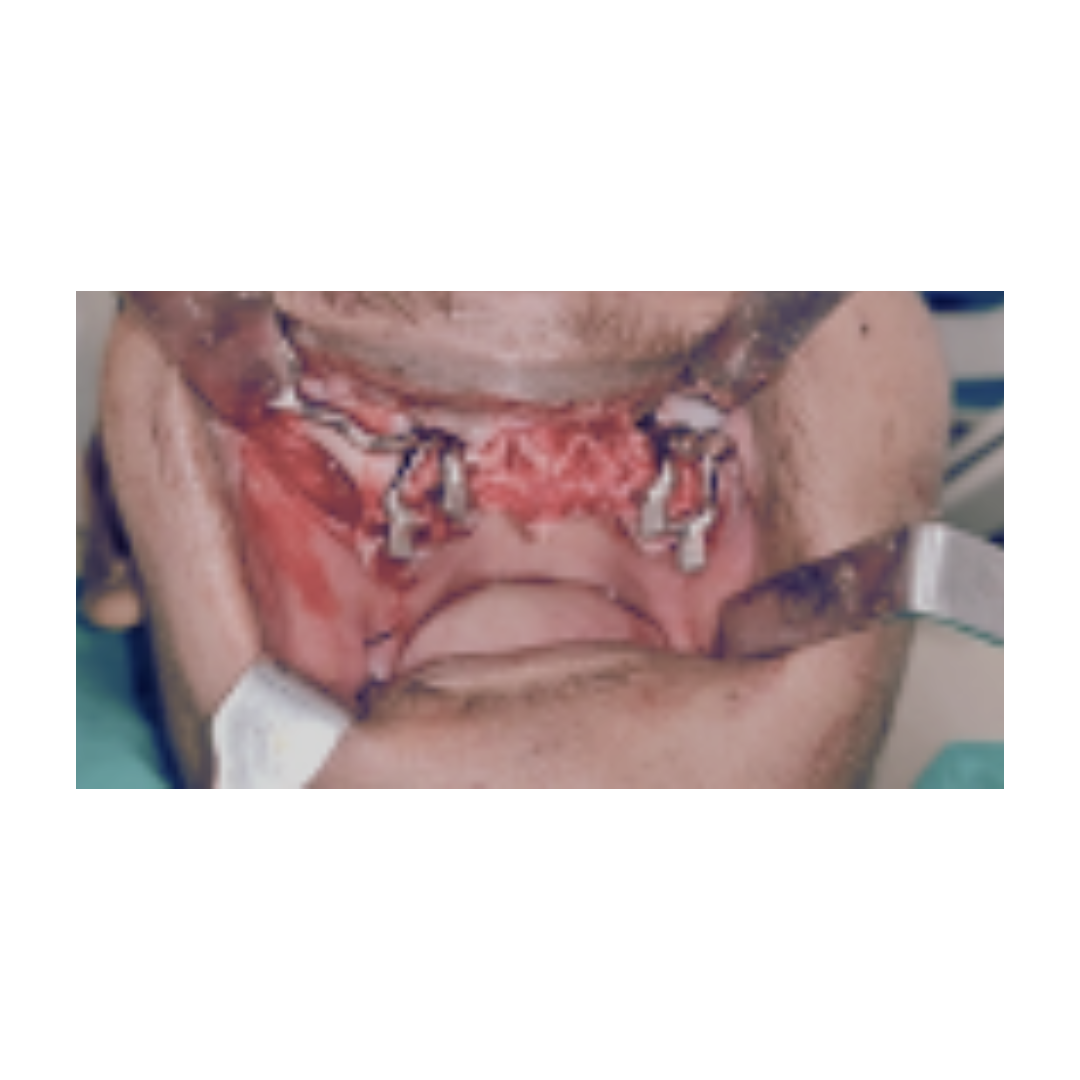Customized Subperiosteal Implant

Advanced surgery planning and Customised Subperiosteal implant for Maxilla & Mandible
17Y/Male, presented with a severe case of Peri-Implantitis affecting both the maxilla and mandible regions. Due to loss of bone and extremely less density, subperiostal implant was the best option.
Challenges:

- Thin Bone Structure: The patient’s thin bone structure posed a significant challenge for the implant surgery. Traditional implant methods might not have been suitable due to the lack of adequate bone density.
- Maxilla & Mandible Deformity: The presence of peri-implantitis due to previous implants, in both the maxilla and mandible regions required a comprehensive surgical solution that addressed both areas simultaneously.
- Age and Development: Being only 17 years old, the patient’s bone structure was still developing. This required a tailored approach to ensure optimal results without interfering with his ongoing growth.
Solutions:
- Jajal Medical, in collaboration with Dr.Karthick. R, developed a comprehensive surgical plan that addressed the patient’s unique challenges and requirements.
- Advanced 3D Planning: Jajal Medical employed its cutting- edge 3D planning software to create a precise surgical plan. The software allowed for detailed visualization of the patient’s bone structure, enabling accurate implant placement and screw fixations.
- Anatomical Models: 3d models of patient’s anatomy provided a tangible representation of the surgical site, aiding in the planning and visualization process.

- Proprietary Software: Jajal Medical’s proprietary software, accessible at jajalmedical.com, provided a 3D view of the surgical plan. This allowed the surgical team to analyze the proposed implant positions, angles, and placement depth with greater accuracy.
- Implant Material: Medical grade Titanium implants were chosen for their biocompatibility and durability. This ensured that the implants would integrate seamlessly with the patient’s bone structure over time.

Procedure:
Under the guidance of Dr. Karthick. R, the surgery was performed using the advanced surgical plan developed in collaboration with Jajal Medical. The implant surgery involved precise placement of subperiosteal implants in both the maxilla and mandible regions. The use of anatomical models and 3D visualization facilitated accurate implant positioning, minimizing surgical complications.
Outcome:
The surgery was a resounding success. The combination of Dr. Karthick’s surgical expertise and Jajal Medical’s advanced 3D Printing technology resulted in the successful placement of maxilla and mandible implants. The patient’s thin bone structure was effectively addressed, and the implants were positioned optimally to support long-term stability and functionality.


Conclusion:
The collaborative effort between Dr. Karthick. Rand Jajal Medical showcased the effectiveness of advanced surgical planning, customized models, and proprietary software in tackling complex implant cases. This case study serves as a testament to the capabilities of modern medical technology in delivering successful outcomes even in challenging cases.
